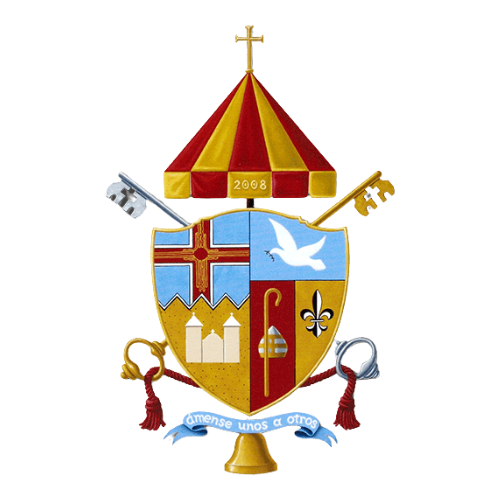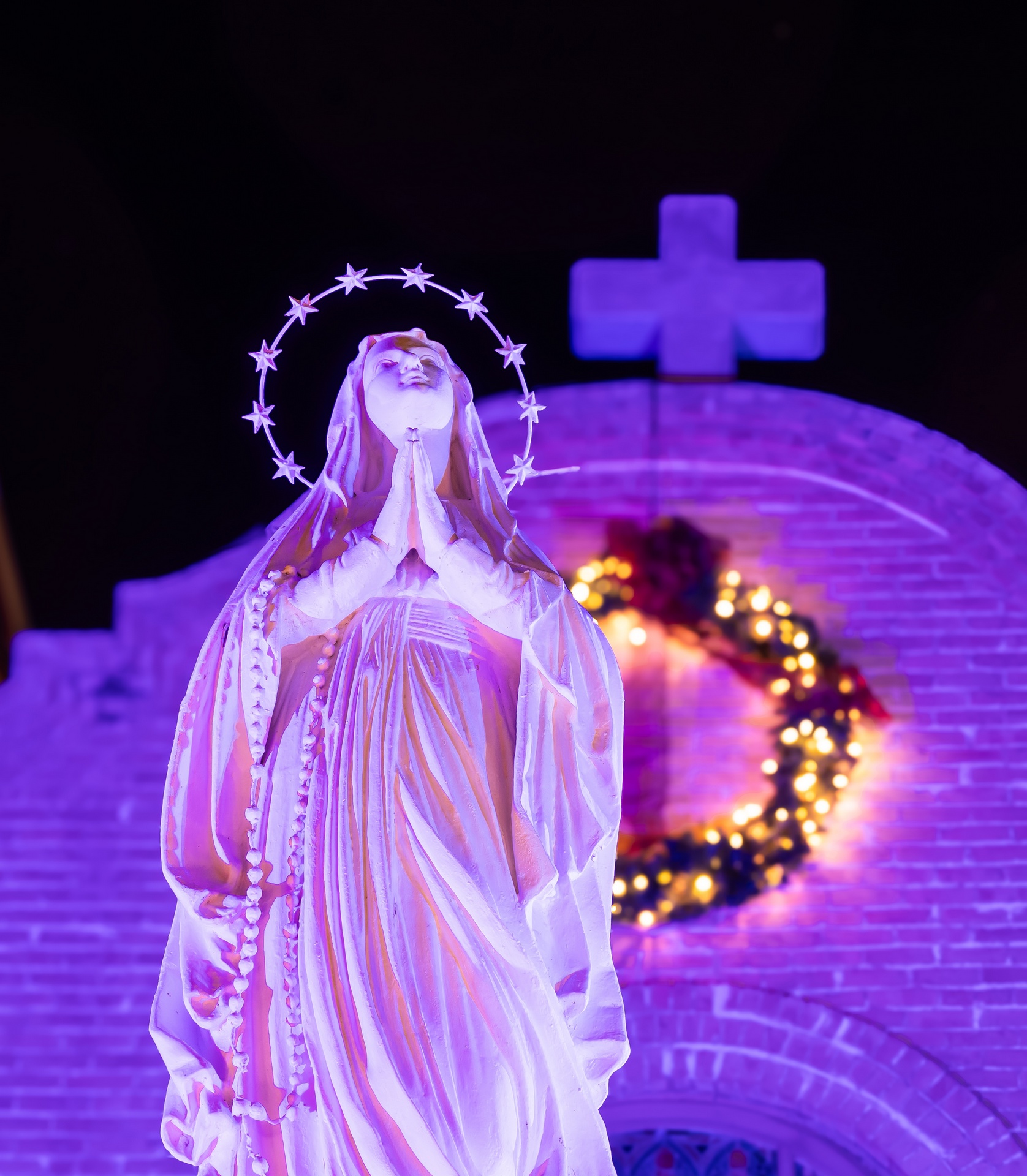San Albino is one of the oldest parishes in the Mesilla Valley. It was established by order of the Mexican government in 1851.
In 1906, the present building was constructed on the foundation of the original adobe church. The bells of San Albino date to the early 1870s.
The Mexican-American War had just ended and land that belonged to Mexico would soon become part of the United States. A group of refugees from present day northern New Mexico, Doña Ana County, and villages south of El Paso del Norte (now El Paso/Juarez) banded together under the direction of Cura Ramón Ortíz. The priest was appointed by the government of Mexico to be Commissioner of Emigration to assist Mexican citizens who wanted to resettle in Mexican territory. It was this band of settlers that arrived west of the Rio Bravo Grande del Norte to establish La Mesilla around 1850. The settlers soon established a central plaza which included a Catholic church on the south side of the plaza. Constructed of mud and logs, this primitive structure was named San Albino.
The people of La Mesilla had always been under the leadership of the bishop in Durango, Mexico, however, a papal decree created the Vicariate Apostolic of New Mexico in 1850. San Albino got its first permanent pastor, Padre Bernardino Hinojos, in 1852. The Gadsden Purchase, 1853-4, added portions of present-day southern Arizona and New Mexico including La Mesilla. Mesilla was transferred to the New Mexico diocese. The shepherd of this new diocese was a Frenchman, Bishop Jean Baptiste Lamy. By 1856, the primitive [mud and logs] structure [on the south side of the plaza] was replaced on the north side of the plaza by a traditional Mexican church, a fortress style providing protection from raids.
Due to the French-European influence, the adobe structure with which the Mexican settlers were familiar was replaced in 1855-1857 with French architecture. In 1872, San Albino parish became part of the Vicariate Apostolic of Arizona, under Frenchman, Rev. Jean B. Salpointe.
It was during this time, in 1876, that the first bell for the church was commissioned. This small copper bell is believed to have been cast at the old rectory on Calle Picacho. Two bells named Sagrado Corazon de Jesus and Maria Albina were cast in 1886 and hung at San Albino. In 1887, the final, and largest of the San Albino bells, Campana Grande, rang out across the Mesilla Valley. In keeping with Catholic tradition the bells, including Sagrado Corazon de Jesus were christened and given godparents to care for them. Today, the bells are still rung to wake parishioners and call them to Mass.
 Location
Location
2070 Calle De Santiago Mesilla, NM 88046
 Working Hours
Working Hours
Mon – Fri …… 9 am – 4 pm,

